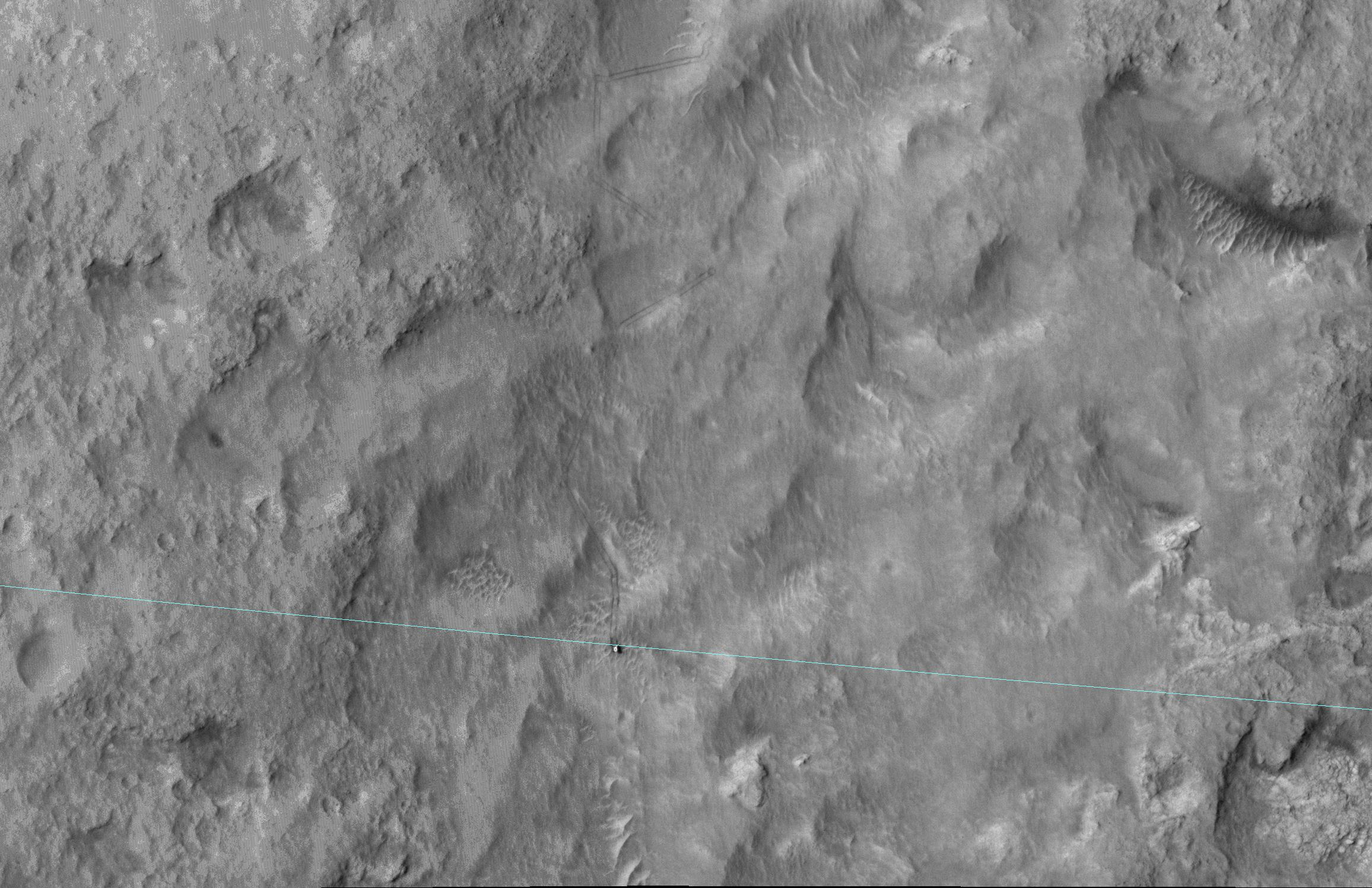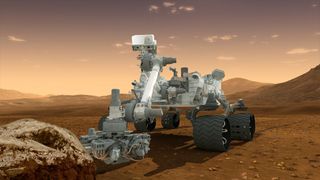
NASA's Mars rover Curiosity has entered a new realm on the Red Planet.
The 1-ton Curiosity rover has now cruised out of its landing ellipse, the area — about 4 miles wide by 12 miles long (7 by 20 kilometers) — regarded as safe ground for its August 2012 touchdown within Mars' huge Gale Crater, NASA officials said.
Indeed, a photo taken by the space agency's Mars Reconnaissance Orbiter on June 27 shows Curiosity right on this boundary, which encloses a region of relatively flat and smooth terrain.
Curiosity landed with the aid of a rocket-powered sky crane, which lowered the six-wheeled robot down softly on cables before flying off to crash-land intentionally a safe distance away. This system, which had never been used before at Mars, allowed Curiosity to land with much more precision than previous Red Planet missions had been able to achieve.
For example, NASA's twin Spirit and Opportunity rovers landed inside an ellipse measuring 93 miles by 12 miles (150 by 20 km) in January 2004. And the ellipse for the agency's two Viking landers, which touched down on Mars in 1976, spanned 174 miles by 62 miles (280 by 100 km).

Curiosity left Yellowknife Bay last July and is now headed for the foothills of Mount Sharp, a 3.4-mile-high (5.5 km) in the middle of Gale Crater. Mission scientists want the robot to climb up through these foothills, which hold clues about how how the Red Planet's environment has changed over the eons.
Mount Sharp's base lies about 5 miles (8 km) from Yellowknife Bay. The rover still has to cover a bit more than 2 miles (3.2 km) to get there.
Get the Space.com Newsletter
Breaking space news, the latest updates on rocket launches, skywatching events and more!
Follow Mike Wall on Twitter @michaeldwall and Google+. Follow us @Spacedotcom, Facebook or Google+. Originally published on Space.com.
Join our Space Forums to keep talking space on the latest missions, night sky and more! And if you have a news tip, correction or comment, let us know at: community@space.com.

Michael Wall is a Senior Space Writer with Space.com and joined the team in 2010. He primarily covers exoplanets, spaceflight and military space, but has been known to dabble in the space art beat. His book about the search for alien life, "Out There," was published on Nov. 13, 2018. Before becoming a science writer, Michael worked as a herpetologist and wildlife biologist. He has a Ph.D. in evolutionary biology from the University of Sydney, Australia, a bachelor's degree from the University of Arizona, and a graduate certificate in science writing from the University of California, Santa Cruz. To find out what his latest project is, you can follow Michael on Twitter.











